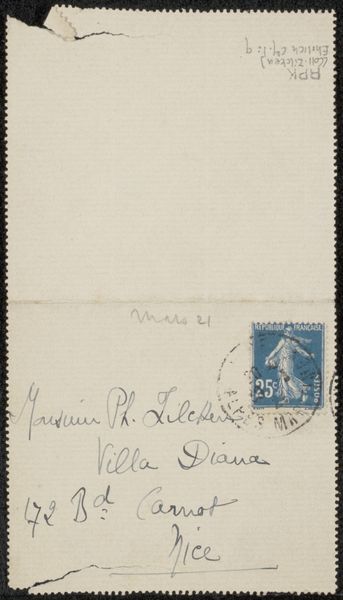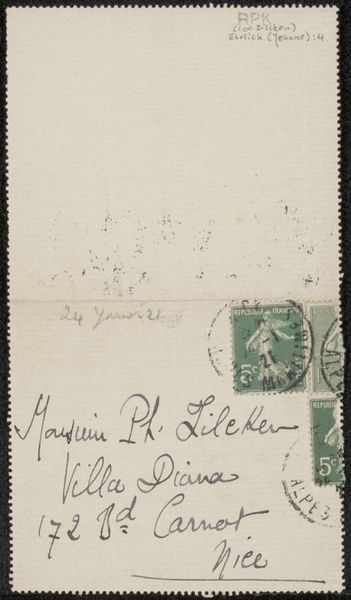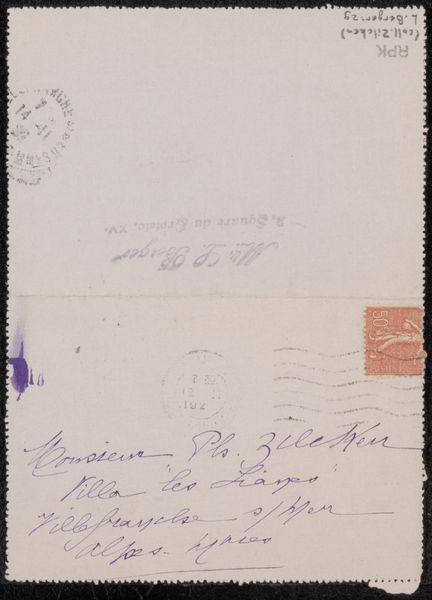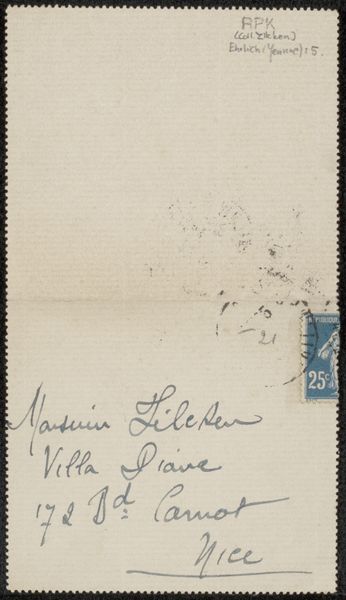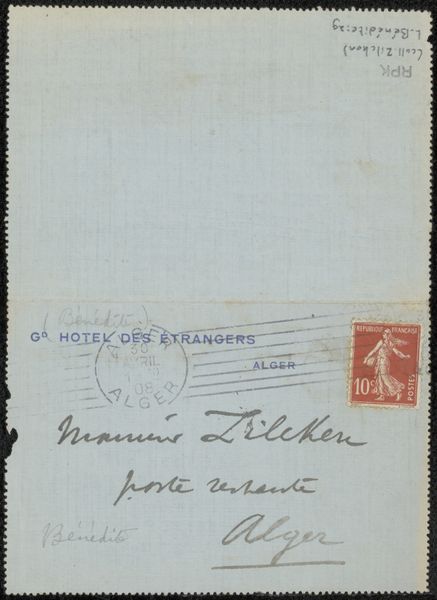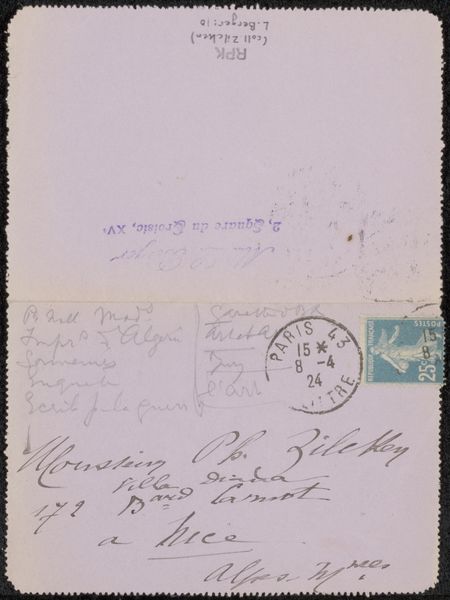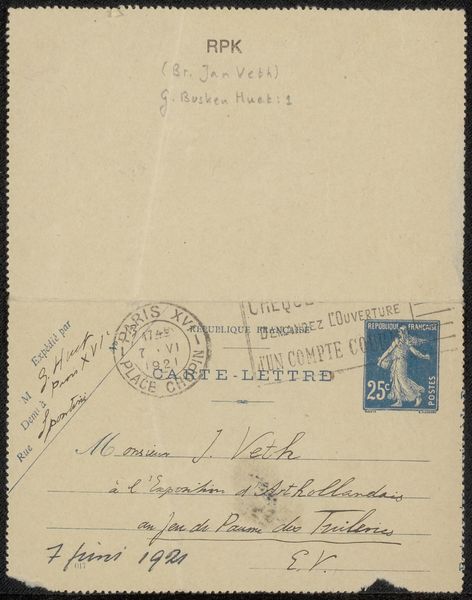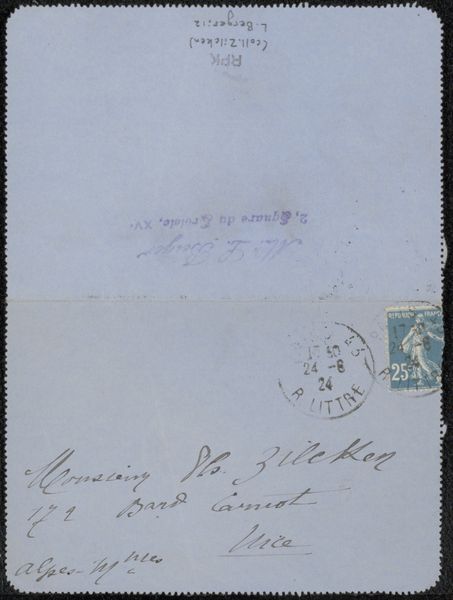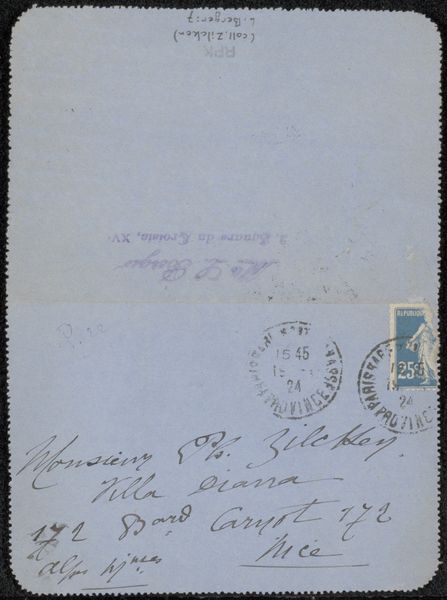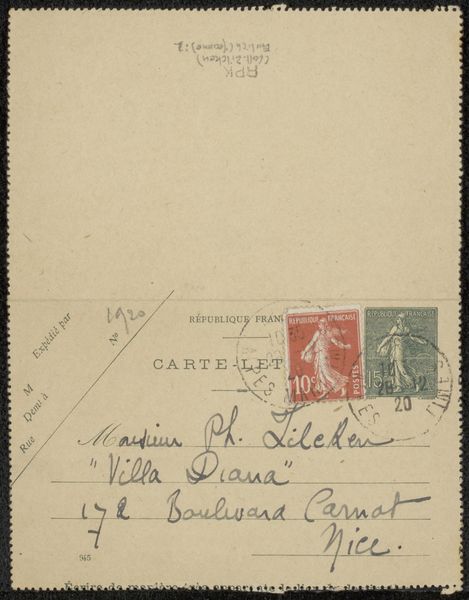
drawing, mixed-media, paper, ink
#
drawing
#
mixed-media
#
paper
#
ink
#
calligraphy
Copyright: Rijks Museum: Open Domain
Curator: Here we have Jeanne Erlich's "Brief aan Philip Zilcken," possibly from 1920. It’s a mixed-media piece, predominantly ink on paper, showcasing her elegant calligraphy. What's your first impression? Editor: A sense of intimacy. It feels fragile and fleeting, almost like catching a whisper in time. The handwriting, although formal, also reveals a personal touch. I’m struck by the simple blue postage stamp featuring the iconic Sower figure. Curator: The stamp is a powerful emblem of the French Republic at the time. Marianne, represented as the Sower, broadcasting seeds of liberty. That stamp choice, placed deliberately by Erlich on this letter, speaks to broader civic values intertwined with her message to Zilcken. It highlights France during the interwar period, a time of significant cultural reconstruction. Editor: Absolutely. Marianne embodies hope, progress and the ideals of the Republic. We're not just dealing with a simple address; the stamp elevates the purpose of the envelope. It almost blesses the journey the letter is about to embark on. I’m curious about Erlich's relationship with Zilcken, too. Curator: Philip Zilcken was an influential figure in the art world, known for his role in promoting contemporary art through exhibitions and publications. The "Villa Diana" address in Nice suggests he enjoyed a comfortable life in his later years. Erlich likely contacted him professionally, perhaps seeking his endorsement. Her choice of material – humble ink on paper rather than something more elaborate– could be a calculated decision, reflecting on budget perhaps but certainly on Zilcken's taste. Editor: Given Zilcken's role, this "brief" holds multiple layers of symbolism. It embodies ambition, artistic intention, and social interaction through its imagery, beyond the handwritten communication. Every aspect appears charged with meaning, every flourish of her pen adding intention. Curator: Erlich was indeed attempting to inscribe herself into the network of the Parisian elite. Her selection of calligraphy is of significance in art history as well. Her goal was clear. Editor: Analyzing these subtle details helps us to imagine both Erlich and Zilcken and gives us insight into the context that this artefact now brings. It adds weight to the otherwise mundane action of sending mail. Curator: Indeed, an seemingly unremarkable message in its journey from one person to another tells a fascinating and nuanced story.
Comments
No comments
Be the first to comment and join the conversation on the ultimate creative platform.
